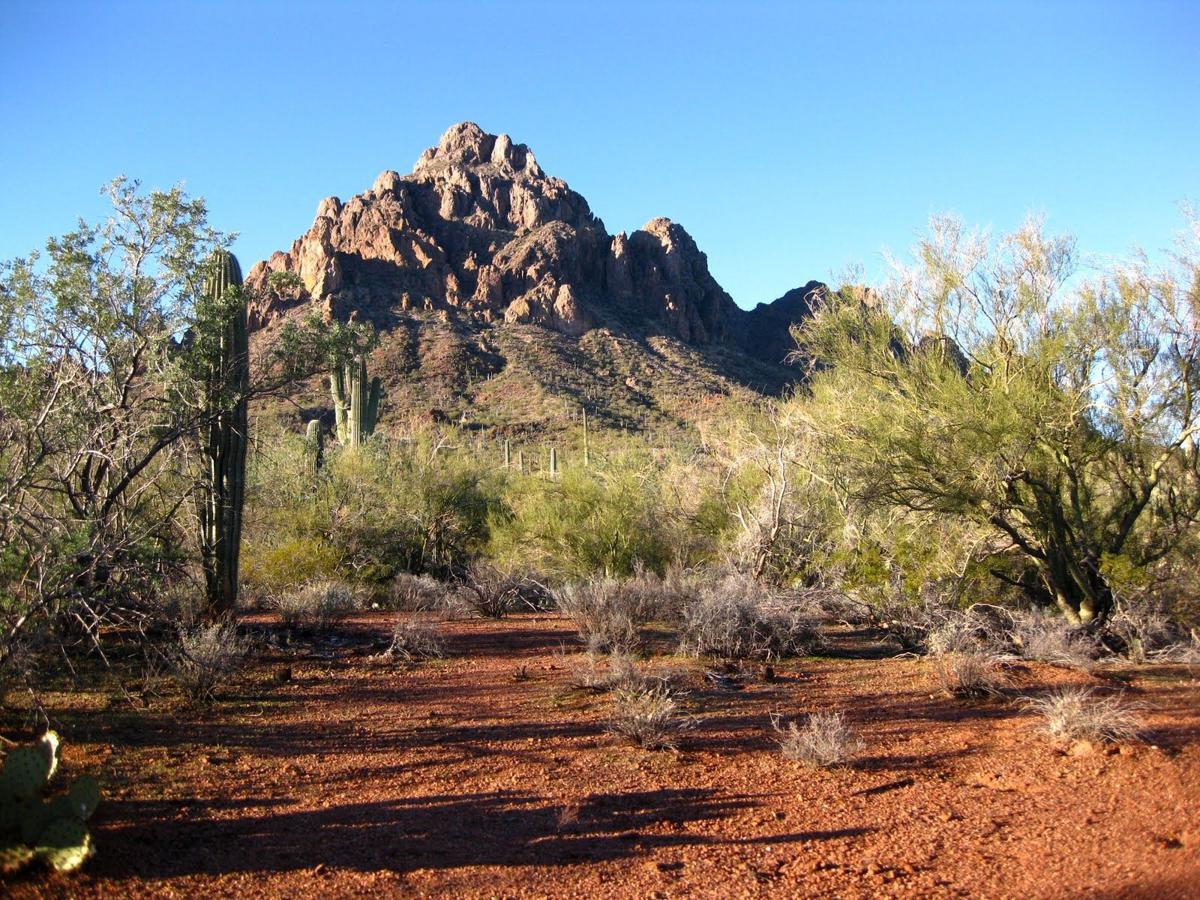A small Tucson-based mining company wants Ironwood Forest National Monument to lose its federal protection, with its CEO saying it’s stopping him from building a major copper mine that could earn $80 billion over its life.
James Briscoe, CEO of Liberty Star Uranium & Metals Corp., hopes to persuade the Trump administration to rescind a presidential designation that created the 129,000-acre monument northwest of Tucson 17 years ago. He calls the designation a “taking” of his private property rights, which he says were formed by his mining clams on federal land.
Thursday, Aug. 24, is the legal deadline for the Interior Department to decide whether to keep or eliminate monument status or reduce the size of Ironwood and 20 other monuments nationally, including two others in Arizona. Originally, Interior Secretary Ryan Zinke was reviewing 27 existing monuments. He has since decided not to touch six of them, including Grand Canyon-Parashant Monument in Northern Arizona.
Briscoe’s project would bring the region far more than $80 billion in total economic benefits, and would have “a very small footprint” on the land because of what he calls the company’s innovative mining approach, he told the Interior Department.
His efforts are drawing pushback from environmentalists. They say they’re skeptical of his project’s mineral potential because Briscoe has kept much of his data secret for competitive reasons. They’re also skeptical of the project’s financial viability, since Liberty Star’s financial statements show it’s never made money and has far more financial liabilities than assets. For that, Briscoe in part blames the decision to create the monument that stopped his exploration work there.
They’re also skeptical of Briscoe’s statements that little would be lost of the northwest-side monument’s wildlife and habitat if the protections were to disappear.
Briscoe says the monument’s ironwoods are less numerous than in other parts of the Sonoran Desert and that the monument no longer has reason to exist since the removal of the cactus ferruginous pygmy owl from the federal endangered species list in 2006.
However, Arizona-Sonora Desert Museum biologist John Wiens and former museum director of natural history Mark Dimmitt say the monument’s real value lies not in its ironwood count or its endangered species presence, but in its extraordinary biodiversity. A 2000 study by former Desert Museum science director Gary Nabhan concluded its ironwoods coexist with 674 plant, mammal and bird species.
Environmentalists in the National Parks and Conservation Association and Friends of Ironwood Forest National Monument are taking Briscoe’s efforts seriously. That’s in part because in a June 20 letter to Zinke, Briscoe included a photo taken in Tucson about eight years ago in which he and his wife posed with Mike Pence — then a congressman and now vice president — and U.S. Rep. Trent Franks, an Arizona Republican.
“I have developed some contacts in previous years that may help,” Briscoe said of that photo in another letter, on May 24 to Liberty Star shareholders.
Briscoe’s company has controlled 26 mining claims totaling about 536 acres inside Ironwood monument’s boundaries since before the monument existed.
“Our investors, mainly Canadian citizens, lost all of their investment and vowed never to invest anything in Arizona again” after the monument was created, Briscoe wrote to Zinke.
The monument drew broad public support at the time, including from the Pima and Pinal county boards of supervisors, as an integral part of the Sonoran Desert Conservation Plan to preserve the best habitat while allowing development elsewhere.
But Briscoe, who recalled going to several public meetings back in 2000 to speak against the monument, calls the Ironwood designation “a massive theft from the people of Pima County” and surrounding regions, referring to the jobs and tax revenue a mine could have brought.
Under federal law and regulations, creating a monument doesn’t stop a pre-existing mining claim holder from exploring. Liberty Star pays the federal government $4,030 annually to maintain its claims, according to its 2016 financial statement with the U.S. Securities and Exchange Commission.
But to drill on Ironwood monument land, a company must prove to the Bureau of Land Management, its owner, that the claims are valid. That requires showing the minerals have economic value, which Briscoe says is virtually impossible to do without exploring.
“It’s ludicrous. We have scads of copper here but nothing can go forward with that kind of law,” Briscoe said. “You’re supposed to get a claim, work it and use scientific methods and use the best laboratories that exist to determine the value.”
In the late 1990s, Liberty Star and a related company, Canada-based JABA Inc., conducted analysis of the land using less sophisticated drilling than it proposes to do now as well as geochemical analysis.
The company defined 10 to 12 significant deposits of copper, lead, molybdenum, zinc, gold and silver, Briscoe wrote to Zinke. They are similar in nature to what Asarco is mining at its Silver Bell project just west of the monument, Briscoe said.
He sent the interior secretary a map detailing locations of what he called geologic anomalies that could produce the most copper. He promised the company will soon release its complete record of exploration data from the site, “including soil geochemistry, geophysics, high-resolution color aerial photography and drill logs.”
But without such records being public, Briscoe’s statements are pure speculation, said Bill Thornton, vice president of Friends of Ironwood Forest National Monument.
“To give the thing some credibility, you’d think he’d publish something in geological terminology that geologists understand,” Thornton said. “All he does is make unsubstantiated claims about tremendous deposits he has been blocked from accessing.”
Countered Briscoe, “Academics are paid to publish. Exploration geologists never publish, and keep it secret. It was so competitive I wasn’t going to release anything. Now I have released a lot and all of those things I have will stand up to peer review.”





